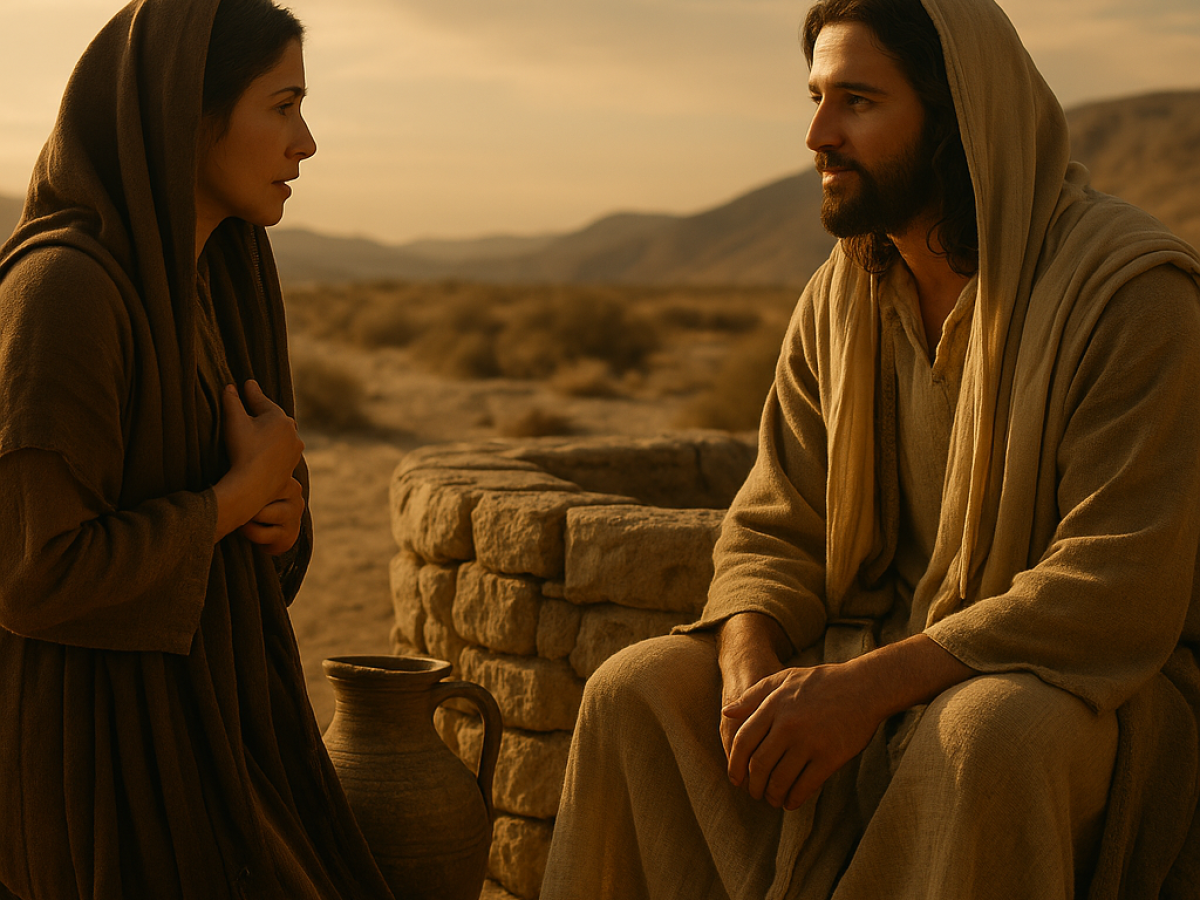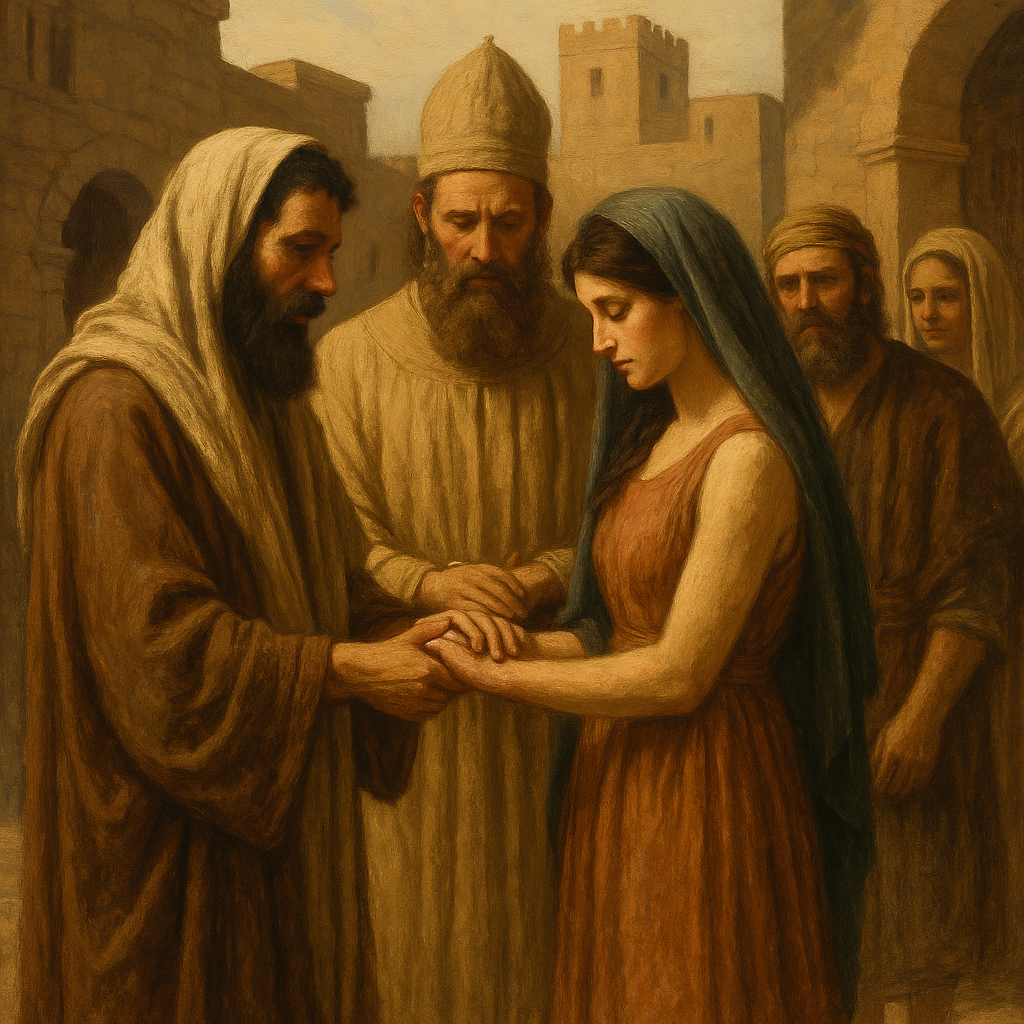
From Hosea to Samaria: The Bride Restored
The prophet Hosea ministered in the eighth century BCE to the Northern Kingdom of Israel, just before its collapse to Assyria around 722 BCE. The nation was unraveling—spiritually, politically, and morally. What began as covenant loyalty under Yahweh had deteriorated into idolatry, corruption, and dependence on foreign powers. Hosea became the living embodiment of God’s heartache over His unfaithful people.
Yahweh instructs Hosea: “Go, take to yourself a wife (Gomer) of whoredom… for the land commits great whoredom by forsaking Yahweh.” (Hosea 1:2) It’s a shocking command. Gomer’s unfaithfulness mirrors Israel’s own— the northern tribes chasing after foreign gods and political lovers like Assyria. Her adulteries dramatize a covenant people who have forgotten their Husband. Yet as Hosea pursues Gomer, Yahweh’s steadfast love is revealed and His promise to one day “allure her into the wilderness” (Hosea 2:14), the place where the relationship first began.
When Assyria invaded (2 Kings 17), the northern tribes were conquered and carried into exile, effectively disappearing among the nations. Hosea describes this as being “hedged in with thorns” (2:6)—cut off and walled in by their own choices. A return to wilderness life separated from the camp of Yahweh. The marriage had dissolved. Israel became a wandering bride, estranged from her covenant home.
A New Bridegroom Appears in the Pattern of Hosea
Centuries later, Yeshua of Nazareth deliberately travels through Samaria—the heartland of the former Northern Kingdom, the soil for the heartbreak of Hosea. The Samaritans, descendants of Israelites intermarried with foreigners brought by Assyria (2 Kings 17:24–33), practiced a syncretized faith—retaining fragments of Yahweh’s worship mixed with pagan influence.
At Jacob’s well near Sychar, Yeshua encounters a Samaritan woman. The entire scene unfolds like a living echo of Hosea’s prophecy. Yeshua tells her she has had five husbands, and the one she now has “is not your husband.” On the surface, this exposes a broken life; at a deeper level, it reflects the story of her people. She embodies exiled Israel spiritually unfaithful yet still sought by her true Husband.
Israel Reborn in One Woman
In the time of Hosea, Israel had “married” the gods of foreign nations. Now, this Samaritan woman personifies that same history, joined to one empire after another. The phrase “you have had five husbands” carries deep symbolic weight, reflecting the five empires that ruled and seduced Israel:
Assyria – the conqueror that scattered the tribes.
Babylon – that absorbed the remnants.
Persia – that allowed return yet maintained control.
Greece – that reshaped faith through Hellenism.
Rome – the present empire, ruling without covenant.
Each “marriage” represents compromise and captivity aligning with empire instead of Yahweh. The sixth who “is not your husband,” represents Rome, the current ruler holding Israel captive.
Thus, when Yeshua names her five husbands, He is recounting Israel’s long exile in miniature. The woman at the well becomes Israel herself—the unfaithful bride, now confronted by her returning Husband.
The Bridegroom at the Well
In Scripture, wells are places of betrothal. Rebekah met Isaac’s servant at a well; Jacob met Rachel there; Moses met Zipporah there. Every time, a marriage followed. John’s Gospel draws from this same imagery. Yeshua meets the woman not in Jerusalem or at a temple, but at a well—the symbolic place for covenant renewal.
He steps into the role of Hosea, but with divine authority. He is not merely a prophet reclaiming a wayward wife. He is now the Bridegroom Himself, offering living water—the water of communion, the reversal of exile’s drought. The wilderness has become a well.
Parallel Stories of Redemption
The stories of Hosea and Gomer and Yeshua and the Samaritan woman are parallel narratives—two encounters separated by centuries yet united by covenant love. In the time of Hosea, Yahweh commands His prophet to marry an unfaithful woman as a living parable of divine mercy: “I will allure her and speak tenderly to her” (Hos. 2:14). Centuries later, Yeshua fulfills that promise by seeking another unfaithful woman in Samaria.
Just as Hosea bought back his estranged wife, Yeshua enters the land of Israel’s exile to redeem His own. At the well, He offers living water—the restoration of intimacy between God and His people. What Hosea experienced takes shape in living form: the divine Husband reclaiming His bride.
Restoration from Exile
The woman’s transformation is immediate. “Come, see a man who told me everything I ever did!” she cries. Her testimony becomes the first ripple of Israel’s restoration. The once-ashamed woman becomes the first herald of good news to her people. Her village becomes the firstfruits of the northern tribes’ return.
Hosea had prophesied, “In the place where it was said, ‘You are not My people,’ they shall be called ‘children of the Living God’” (Hos. 1:10). Now, that promise blooms at the well. Samaria, the land of betrayal, becomes the land of reconciliation.
The five husbands: Assyria, Babylon, Persia, Greece, and Rome also represent humanity’s endless cycle of false saviors, systems we “marry” to survive. But none can satisfy. They all leave us thirsty. Only the covenant love of the Bridegroom can restore the wellspring of life.
The Voice Across the Centuries
The Samaritan woman’s encounter marks a turning point in redemptive history. The story that began in Hosea—with betrayal, judgment, and longing—finds its resolution in Yeshua, who comes to reclaim His wandering bride.
From the wilderness of Hosea to Samaria’s well, the same voice calls: “I will betroth you to Me forever… in faithfulness, and you shall know Yahweh.” (Hosea 2:19–20)


Leave a Reply